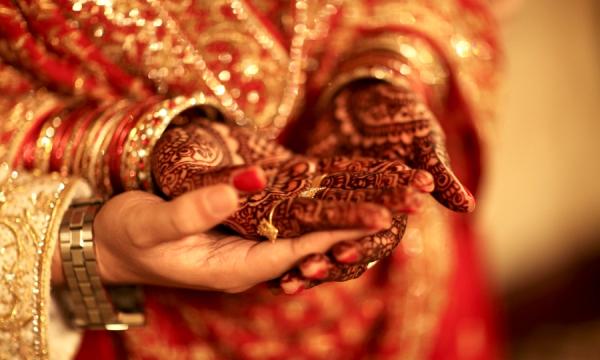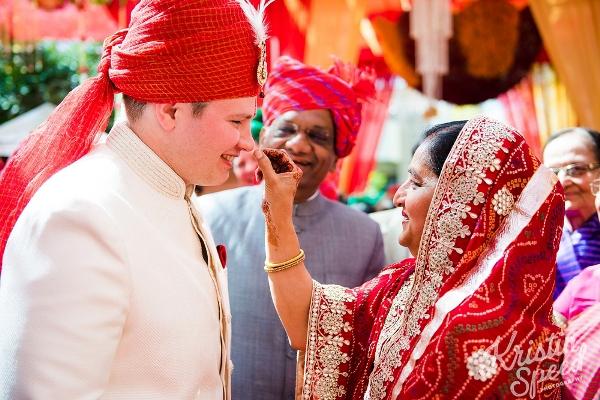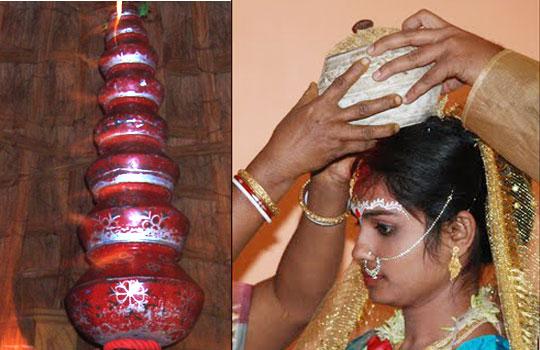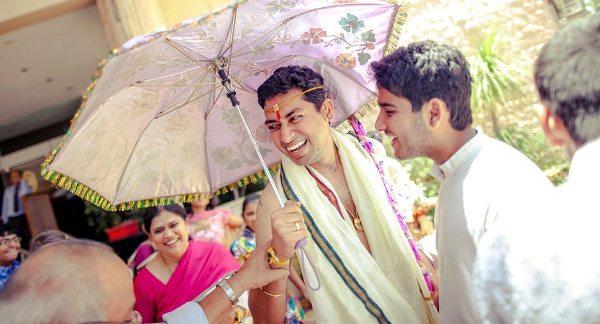
Indian weddings are known for their traditions, grandeur, colors and rituals. It is a perfect blend of both serious and fun-filled rituals. These rituals strengthen the bond between the groom's and bride's family and helps in bringing the bride and groom closer. Though there are general guidelines that define a Hindu wedding, every caste and community of India has their own unique traditions, some of which are unique and very interesting. Here is a list of some interesting traditions of Indian weddings.
Finding the ring
In the Gujrati community, ring finding ritual is known as Aeki-Beki. In this ritual a tray or pot of water is mixed with milk and vermillion and a ring and few coins are thrown in the mixture. Both the bride and groom get seven chances to find the ring. The one who finds the ring the maximum number of times is considered to be dominant among the two.
In the Telugu community the same ritual is performed by hiding the rings of both bride and groom in a basket of uncooked rice. The bride has to find the groom's ring by touch and vice versa. If they are successful in finding the rings then it is believed that the marriage will last long. Telegu brides often carry decorated coconuts during the ceremony.

Nose Catching
Another of the most interesting traditions of Indian weddings involves the Gujaratis in Western India. On the arrival of baarat (groom's family and relatives), the bride's mother tries to catch the nose of the groom. It is done by the bride's mother to remind the groom of the fact that he is taking away her daughter and her happiness and is now his responsibility.

Shoe Hiding
In the shoe hiding ritual, the girls of the bride's family make wacky plans to hide the groom's shoes and the groom's family tries to protect it. When the groom needs his shoes back, he and his family will have to pay off the amount demanded by the girls to get the shoes back. Hiding the shoes of the groom is a famous tradition among several Hindu and Parsi weddings.
Pot Balancing
In Pot balancing ritual, the mother-in-law of the bride sets an earthen pot on the head of the bride when she enters the groom's house. Then as the bride goes on touching the feet of the elder as a sign of respect, more earthen pots are set on her head. The number of pots the bride can balance indicates her skill at striking a balance in her family. This ritual is followed in Bihar after the Hindu wedding.

Pith Ball Test
In the state of West Bengal, the Pith ball test is taken to test the strength of the bond of bride and groom. In this game two pith balls are floated into a bucket of water and the water is stirred very fast. One ball represents the bride and another represents the groom. It is said that the movement of the balls denotes who will be the main decision maker among the bride and groom or wether they both will separate after some time.
Demanding Gifts
In the Parsi community in the West Indies, during the ritual of Haath Boravanu, the groom puts his hands in water and cannot remove them until he pays gifts or money to his sister-in-law. Pag Dhovanu is a similar ritual in which the groom is threatened with milk on his shoes. In another ritual named Chero Chorvanu, the couple is tied with seven threads and it is removed when they pay the gift.
Chantham Charthal
This funny ceremony happens on the pre-wedding eve of Knanaya Weddings. A local hair dresser and his son reach the groom's house dressed in half dhoti, white tees and with a gold cap and waist belt. There he is seated on a stage. The barber asks permission to the crowd three times, in the name of their protective rights over seventeen castes (a traditional belief) to shave and beautify the guy with an oil bath.
The Bride attack
Toran bandhan is a ritual practiced in Rajasthan where feminine strength is displayed. In the days of Kings, the Rajput bride used to attack the groom with a sword and if he wasn't able to duck it or got injured and thus was considered unfit for the bride. In modern times, the bride symbolically pokes the chest of the groom with a sword. In some other places, the bride and her female relative attacks the groom's entourage with garlands of sweets.
Foot Fight
This is a fun ritual followed in Sindhi weddings where the bride and groom compete to have their right foot above the other's. It is believed that the one whose foot is on the other one will be the dominant one in the relationship. It is played when the groom comes to pick up the bride.
Kaashi Yaatra
In this ritual, the groom pretends to go on a Kaashi Yaatra to celebrate bachelorhood. He holds and umbrella, bamboo fan and wears slippers during this ritual. Then he is stopped by the bride's brothers and cousins who request him to take the responsibility of the household. This fun ceremony is followed in Iyyengar, Telugu and Konkani weddings.

Sithanis
When the main function of Punjabi weddings is over, the male members hug one another. At that time the girls start reciting verses called sithanis which are songs containing sexual innuendos and are intended to poke fun at the groom's family. This ritual is taken in a playful and light hearted spirit and nobody takes any offence.
Most traditional customs at Hindu weddings
There are several interesting traditions that are followed by Hindus at their weddings. As you may know, these weddings last for several days. The bride is treated like a queen, she has her hands painted in Mehndi to bring happiness and good look; and traditionally wears red.

If you want to read similar articles to Interesting Traditions of Indian Weddings, we recommend you visit our Weddings & Parties category.